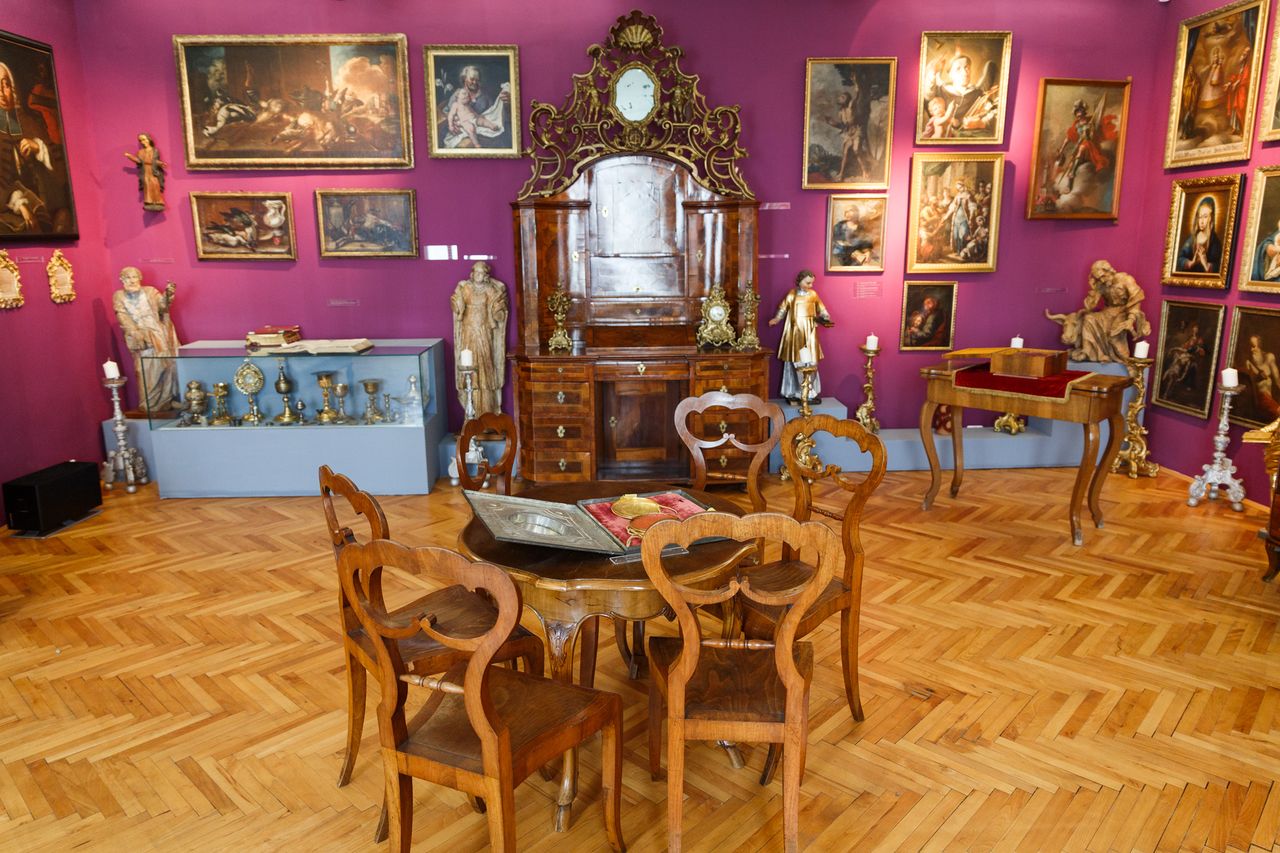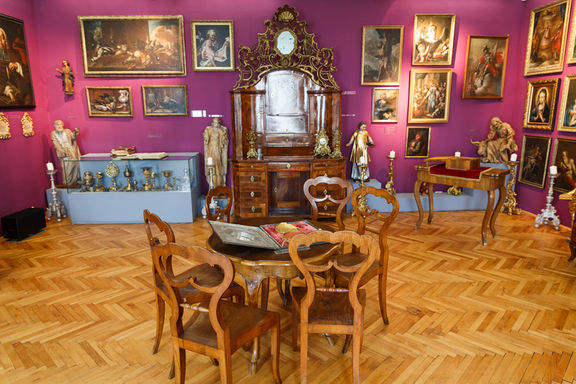Difference between revisions of "Soklič Collection"
| Line 22: | Line 22: | ||
{{Teaser| | {{Teaser| | ||
| + | {{Wide Image|Soklic Museum 2019 Photo Kaja Brezocnik.jpg}} | ||
| + | |||
[[Jakob Soklič]] (1893–1972) became parish priest of Slovenj Gradec in 1933. As an enthusiastic collector and amateur art historian he soon started collecting various art objects and books. In [[established::1937]] he founded a [[Soklič Museum|museum]] which within a short time was named after him. Soklič later bequeathed his collection to the local parish. It has been under the care of the [[Koroška Regional Museum, Slovenj Gradec Unit]] since 1996. Today the collection numbers around 1,500 objects, including historical, archaeological and ethnographic objects, paintings, sculptures and traditional arts and crafts objects. | [[Jakob Soklič]] (1893–1972) became parish priest of Slovenj Gradec in 1933. As an enthusiastic collector and amateur art historian he soon started collecting various art objects and books. In [[established::1937]] he founded a [[Soklič Museum|museum]] which within a short time was named after him. Soklič later bequeathed his collection to the local parish. It has been under the care of the [[Koroška Regional Museum, Slovenj Gradec Unit]] since 1996. Today the collection numbers around 1,500 objects, including historical, archaeological and ethnographic objects, paintings, sculptures and traditional arts and crafts objects. | ||
}} | }} | ||
Revision as of 22:26, 4 November 2019
Soklič was also a researcher and he published the results of his research work before the Second World War, mostly in the Journal for History and Ethnography in Maribor. Several of his articles were of fundamental importance for the art history of Slovenj Gradec and its environments.
Soklič Museum is a fine example of a treasure room, a concept which originated and developed from the 16th century up to the modern era - the collector placed the objects into his residential and working environment and lived with them. Soklič's collection is a real rarity, not only in Slovenia but also in the wider region. With its placement on the first floor of the city parish house it specifically illustrates local history and is one of the most attractive points of the city's touristic scene.
See also
External links
- Soklič Museum website (in Slovenian)




